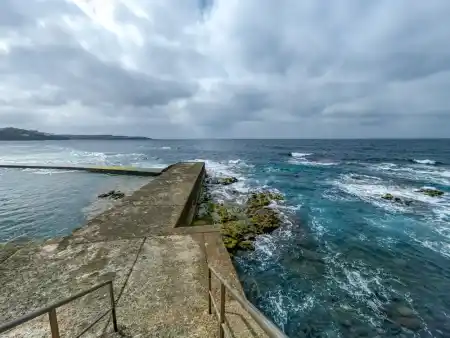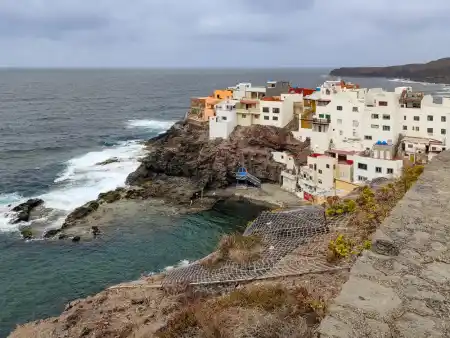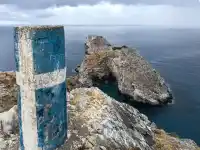The Guanches were the island’s first settlers, migrating to the archipelago from North Africa around 1000 BC. The Guanches were the indigenous inhabitants of the Canary Islands, tribes of hunters and gatherers who lived a life similar to the Stone Age. They lived in caves and huts and needed more tools due to the absence of ore for metal production on the volcanic islands. They knew about basic farming and also produced pottery. Today we set out to learn about Cuatro Puertas and Galdar, the pre-Hispanic civilization of Gran Canaria.
Guanches pre-Hispanic civilisation
Like the ancient Egyptians, the Guanches were known for embalming and mummifying their dead. While on Tenerife they, like the Egyptians, built pyramids on Gran Canaria, most archaeological sites are associated with caves. The three main mystical areas are at Galdara, Roque Bertojede and Cuatro Puertas in Telde.
The Guanches lived peacefully on the island for 40 generations until the Spanish conquistadors decided to shower them with progress and belief in God. Spain colonized the islands between 1402 and 1496, and the settlers so ethnically and culturally absorbed the Guanches that after a few battles, 200 Guanches remained on the island. After the Spanish conquest of the Canary Islands, they were ethnically and culturally absorbed by the Spanish settlers, although elements of their culture still survive, mixed with Canarian customs and traditions such as Silbo (the whistled language of La Gomera).

Cuatro Puertas
A visit to this complex of caves will amaze you. Right at the entrance you will discover the iconic Four Doors cave. A large north-facing cave with four large doors carved into the rock from which the entire complex is named.
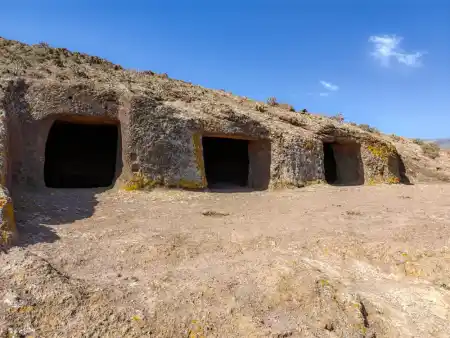
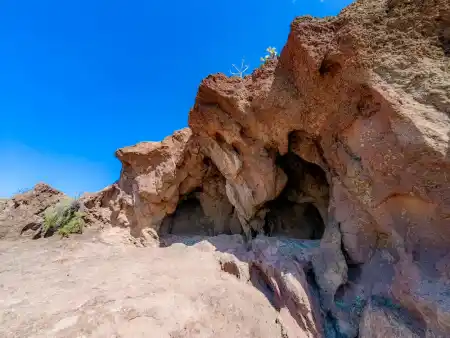
Almogoren
Directly above it, you will discover Almogoren. The open-air sacrifice at the top with circular drainage funnels provoked my imagination. What was sacrificed here, and what flowed through those channels? The truth, however, is much more prosaic. Do not expect horror stories. They offered milk and various liquids to deities. Archaeologists, conversely, claim that the most beautiful virgins on the island lived here under the leadership of the chief eater, Faycan, who spilt the milk. 🙂 A sight that will get many a tourist excited.
However, the views of the island will take your breath away. This place has a excellent location.
Cave dwellings

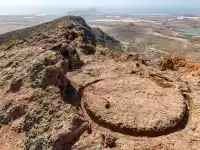
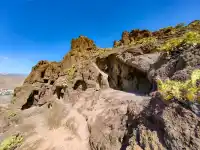
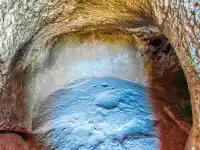
At the back of the south side of the wall is a series of caves and caverns protected from the weather, which run along the whole wall. They were used for storage of food, grain and housing. Impressive. Part of this town and about 200 metres towards the coast is the Cueva de La Audiencia. This cave was the city’s granary, so for its protection and defence, it was located in a difficult and dangerous place to access, to which stairs carved into the rock lead. According to a plaque in the Cuatro Puertas caves, the last shepherd lived at the beginning of the century. Incidentally, the island still offers the experience of sleeping in hotels in the caves. 🙂
The lighting effects in the caves and the engraved signs also suggest that the Guanches had excellent astronomical knowledge. Archaeologists found Maps of the sky on the islands at several natural observatories, which became sacred spaces with sacrificial altars. Magic and astronomy became part of the cultural and economic survival of the community.
Getting there
To get to the Cuatro Puertas site, take the Goro road and head towards Ingenio, and you will find a detour on the left, in a group of houses, where there is a marked path to take. There you will find Bermeja mountain, named for its reddish colour.
We recommend arriving early in the morning because of the incredible views from the other side of the mountain, which faces southeast—an absolute wonder.
The ancient Gran Canarians had a profound knowledge of the sky and its cycles, which enabled them to organize their domestic and religious life. Even chronicles speak of the celebration of pre-Hispanic festivals associated with the position of the sun, moon and stars. Other places on the island related to equinoxes or solstices that the Cabildo visits are Bentayga, Risco Caído, Cuatro Puertas or La Guancha.
Galdár
If you want to learn more about the life of the Guanches, I recommend visiting the archaeological museum and cave in Galdar. During an hour-long presentation, you will get a comprehensive overview of their life and end on the island. Today, Gran Canaria boasts almost 1,200 archaeological sites.
Museo Cueva Pintada
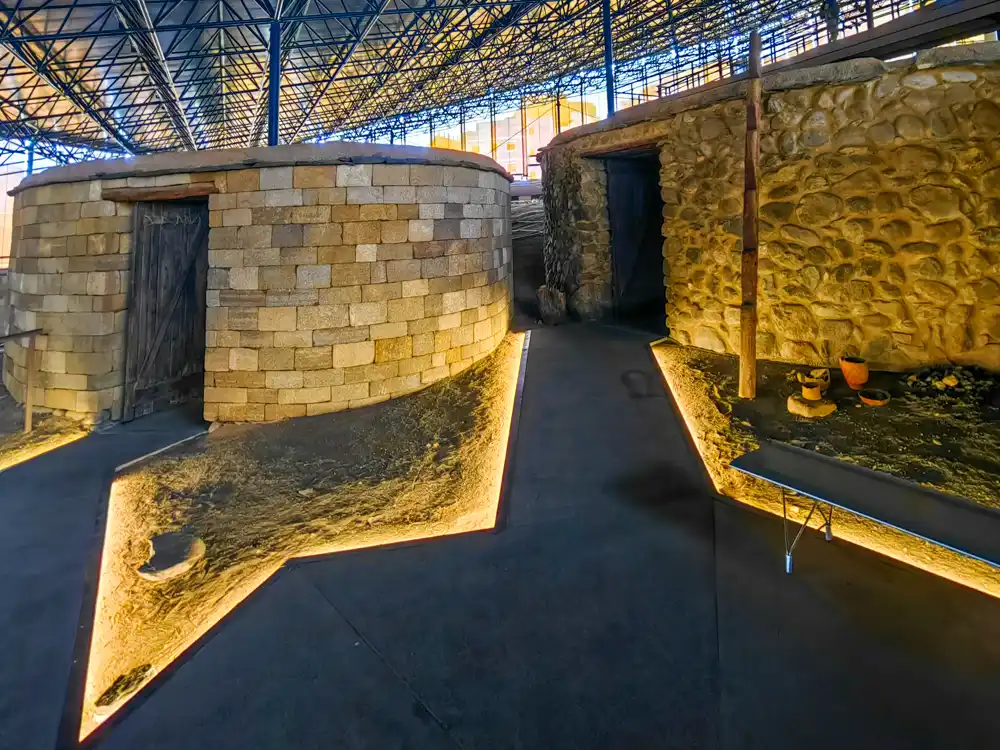
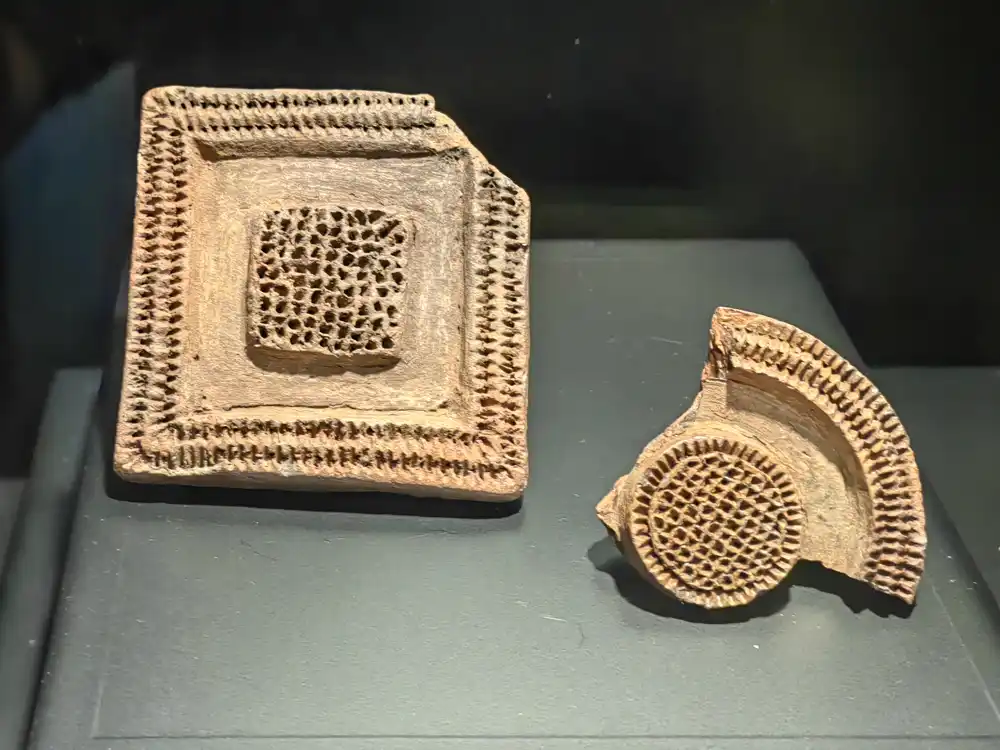
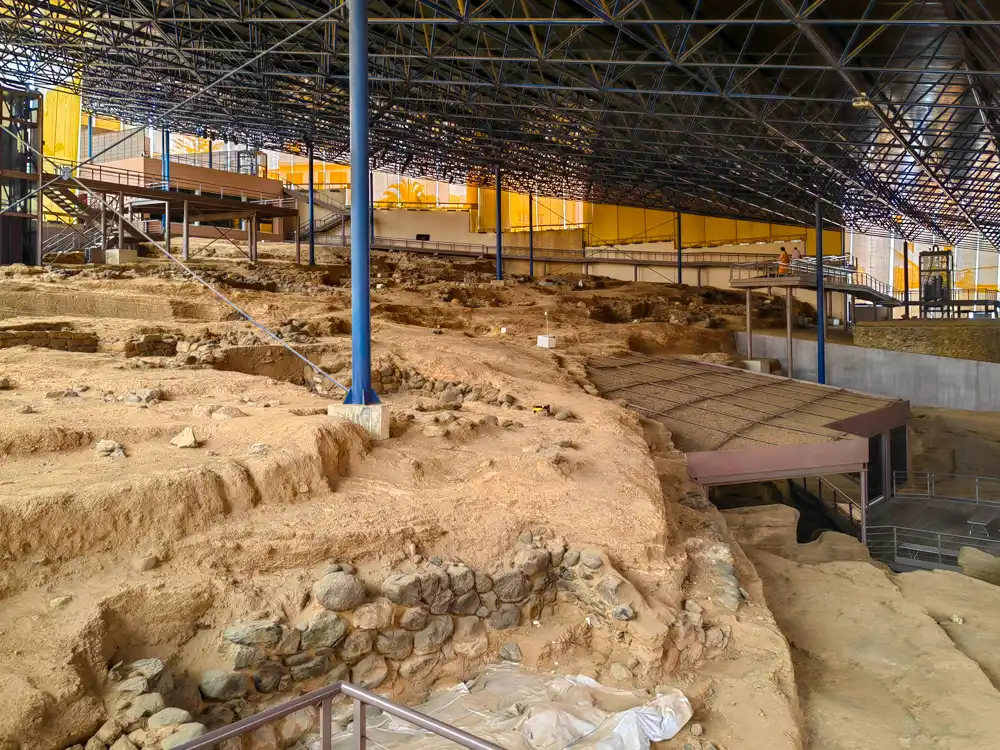
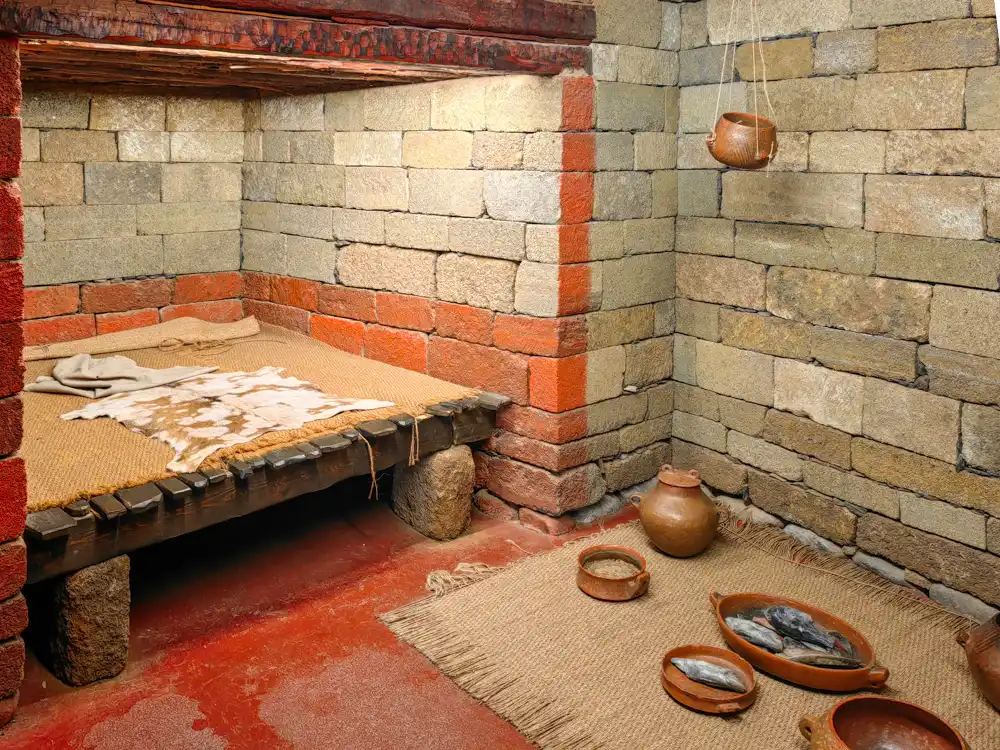
One of the few places on Gran Canaria with an entrance fee. Symbolic. 🙂 If you’re in Galdara, don’t bypass this mystical place.
And if you want to experience the life of a Gaunche, visit the Guayadeque Ravine, where you can stay in a similar cave for a small fee. Benefits? No wifi, no electricity, complete silence and a comfortable temperature. Toilet in nature.
Santiago de los Caballeros, turn to god
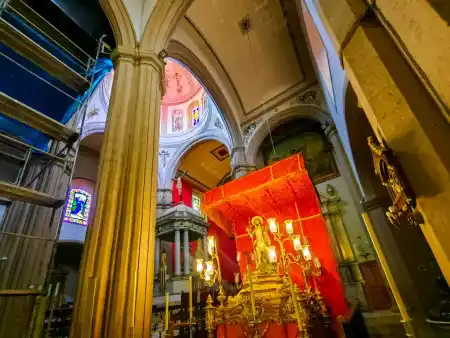
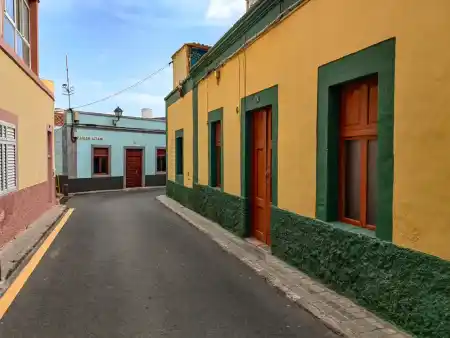
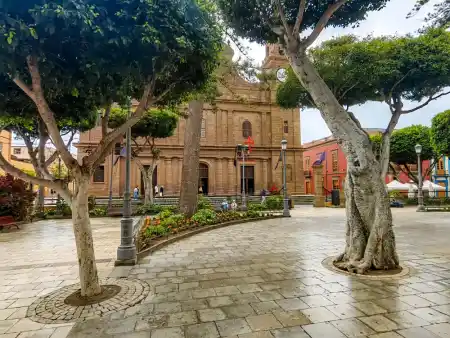
When the Spaniards started colonizing the islands, discovering their riches and bringing God and faith to them, they did it so intensively that within a few years, only two hundred indigenous inhabitants remained on the island. Most were killed in the fighting or moved to the mainland.
Puntas de Galdár
From the centre of Galdár, we rushed to the ocean for the evening. We wanted to try the local puntas. These are sort of concrete/natural pools that allow locals to swim even in big waves. Towards the open Atlantic, they are trendy. The road to them leads through hundreds of hectares covered with greenhouses. What the devil, just as we got to the sea, the weather deteriorated sharply, and there was nothing to show for the swim. 🙂
Cuatro Puertas and Galdár- time to discover the history of the Guanches,
